49 Tasty Red Fruits Bursting With Antioxidants
Updated: 09 Jun 2023
172
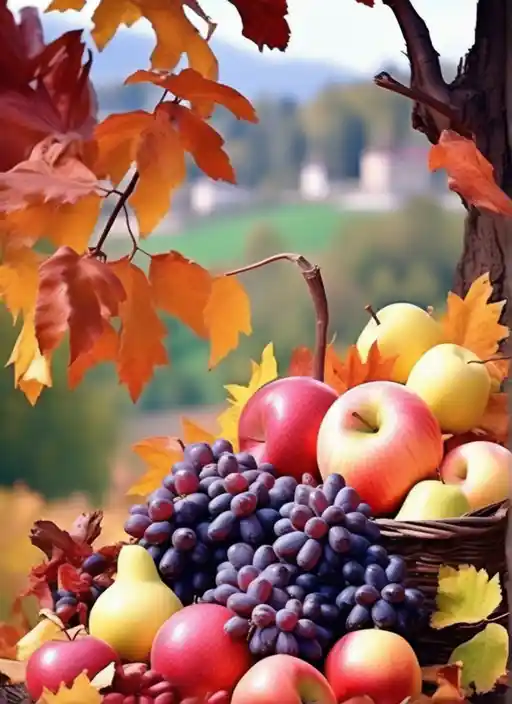
A rainbow of colorful fruits fills the produce aisle, but you’ll catch your eye on the vibrant reds with their rich skin and flesh.
From the sweet, juicy berries we top our morning cereal with to the larger, fleshier fruits we slice for fruit salads, there are dozens of delicious red fruits to discover.
There are 49 common red fruits that you can find at your local grocery store or farmers market. The sheer variety is astonishing – red fruits can be tiny and delicate or large and hearty, sweet or tangy, soft or crunchy.
Some have an intense, bold red color, while others are more muted. From cherries to pomegranates and everything in between, red fruits liven up any meal or snack.
So next time you go food shopping, keep an eye out for these 49 red beauties. With so many to choose from, you could try a new red fruit every week for nearly a year!
Your taste buds are sure to be wowed by the diversity.
Table of Contents
49 Best Fruits That Are Red
The produce section is a rainbow of colorful fruits. But the ones with vibrant red skin pop out! Red fruits also have unique tastes. Tart cherries, juicy berries, sweet red apples—there are so many to try! Take a tour of healthy and delicious red fruits. Your plates are about to get a bright, nutrition-packed makeover!
1. Cherries
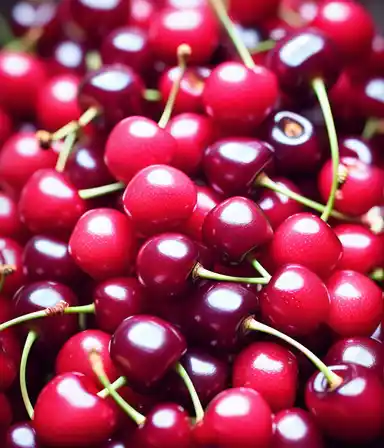
Cherries are nature’s candy; these tiny red gems have a delicious honey-like sweetness when ripe. Bursting with antioxidants and anti-inflammatory compounds, cherries may help reduce muscle soreness and improve sleep quality. Their bright red color signifies high nutrient content.
2. Strawberries
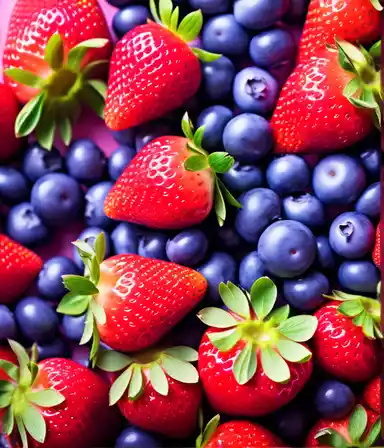
One of the most beloved berries, strawberries are packed with more vitamin C per serving than an orange. The vibrant red color comes from anthocyanins, which may boost heart health and memory function. Strawberries make the perfect sweet treat and add fresh flavor to salads.
3. Raspberries

Velvety soft and bursting with sweetness, raspberries are a superfood powerhouse. Their seedy red flesh contains ellagic acid, an antioxidant with anti-cancer effects. Raspberries are also high in fiber, which aids digestion and weight loss. Their intense color reflects immense nutrient density.
4. Cranberries
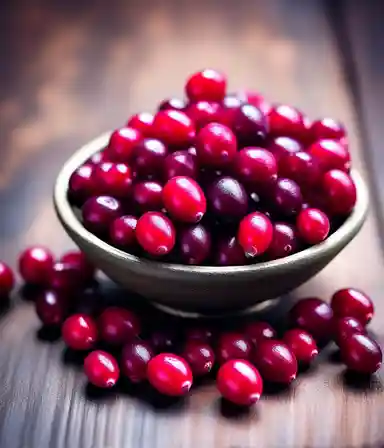
Tiny but mighty, cranberries have the highest antioxidant levels of any fruit. Their astringent, tart taste comes from special proanthocyanidins that prevent nasty UTIs. Cranberries even contain Type A Pac cranberry polysaccharides, linked to reduced heart disease risk and anti-aging.
5. Red Grapes
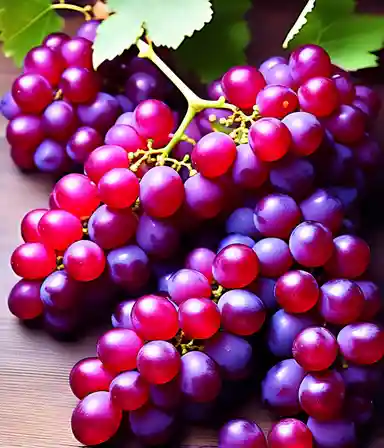
Red grapes glow like edible rubies on the vine. They contain the phytonutrient resveratrol, which may protect cells against damage and lower the risk of cancer and heart disease. Red grapes also have antiviral and anti-inflammatory effects to boost immunity. Their vibrant color indicates nutritious skin and flesh.
6. Red Apple
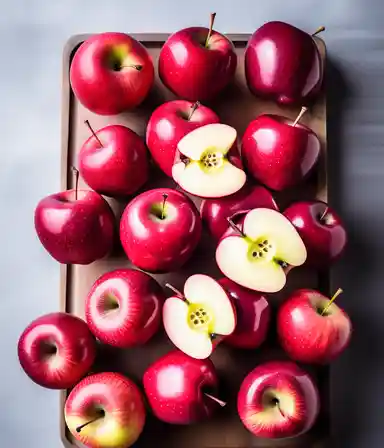
Crunchy, sweet, and nutritious, red apples like Red Delicious have potent health benefits. The dark red skin is full of quercetin, which may reduce neurodegeneration. The pectin fiber in apples promotes a healthy gut and heart. Red apples make the perfect on-the-go snack.
7. Red Pears
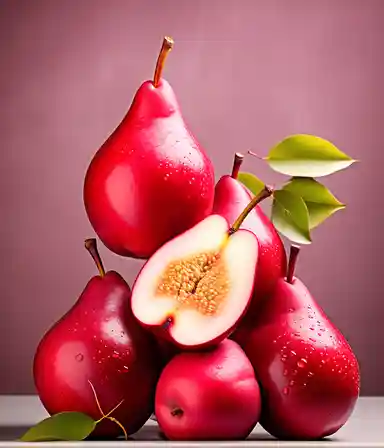
Regal and elegant, red pears offer a delicately sweet flavor plus powerful nutrients. They contain dietary antioxidants like anthocyanins, catechins, quercetin, and chlorogenic acid, which fight cellular damage caused by free radicals. The ruby red skin of pears provides an excellent source of phenolic phytonutrients.
8. Red Plums

Plums are an antioxidant powerhouse with their deep red skin and lush flavor. Plums contain chlorogenic acids that may lower the risk of obesity and help manage blood sugar levels. The skin of red plums has a high concentration of anthocyanin pigments with anti-inflammatory effects.
9. Red Peaches

Like edible roses, red peaches contain key antioxidants like vitamin C, beta-carotene, and lycopene to fight free radicals and inflammation in the body. Peach skins also have lutein and zeaxanthin to reduce the risk of macular degeneration and improve eye health. Their delicate red blush contains dense nutrition.
10. Pomegranates
With a tough rind enclosing juicy red seeds, pomegranates are little bundles of antioxidant power. Their bright red arils are packed with ellagic acid to boost heart health and fight cancer cell formation. Pomegranates also have anti-inflammatory and antimicrobial effects to protect overall health.
11. Watermelon
Watermelon has a sweet, juicy red flesh dotted with edible black seeds. It is over 90% water and great for hydration. Watermelon contains lycopene, a powerful antioxidant that may reduce the risk of cancer and heart disease. This summer classic is packed with nutrients.
12. Red Bananas
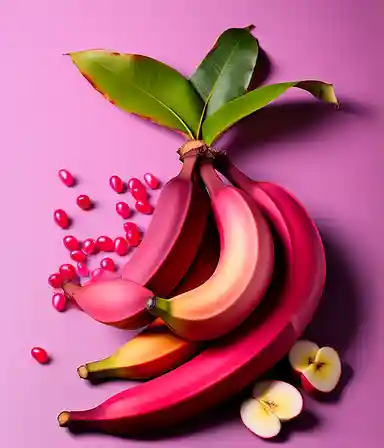
At first glance, red bananas seem unusual with their rosy purple skin. But their creamy, sweet flesh tastes just like yellow bananas. Red bananas contain more beta-carotene and vitamin C than their yellow cousins. Their vibrant color comes from anthocyanins.
13. Red Guava
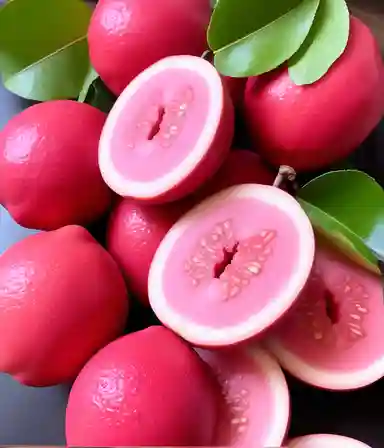
Native to the tropics, red guava is an oval fruit with light red skin and pinkish flesh. Its unique flavor is sweet and tart with a light strawberry note. Red guavas are rich in lycopene, vitamin C, and fiber that promote heart and digestive health.
14. Red Dragon Fruit
With vivid fuchsia skin and white flesh, red dragon fruit is an exotic superfruit. Its flavor is mildly sweet and akin to kiwi. Dragon Fruit contains prebiotic fiber to aid digestion and high antioxidant content to fight cell damage by free radicals.
15. Red Currants
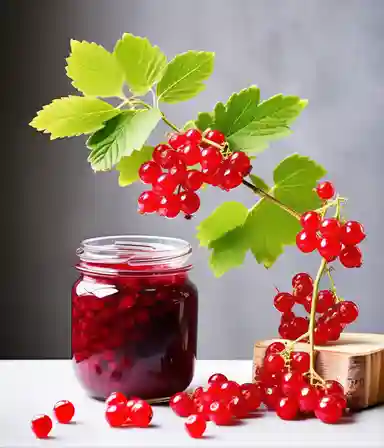
Tiny red currants grow in clusters on shrubs, with tart flesh encapsulated by thin skin. Their vibrant color reflects high amounts of anthocyanins, which may help lower the risk of heart disease, cancer, and Alzheimer’s. Currants make unique jams and baked goods.
16. Red Gooseberries
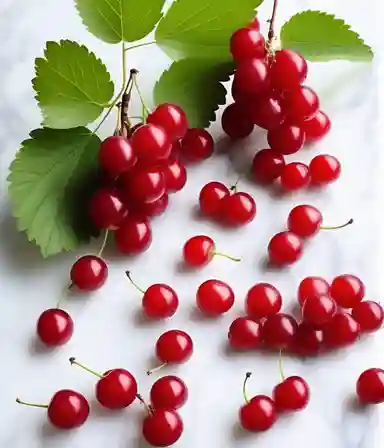
Also called red garden gooseberries, these marble-sized fruits have a bittersweet, floral flavor. They contain compounds called proanthocyanidins that may reduce the risk of diabetes by improving insulin secretion and glucose uptake.
17. Red Mulberries
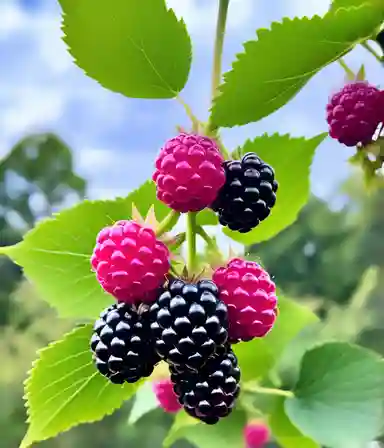
Shaped like blackberries, red mulberries grow on trees and have a sweet yet acidic taste. They are packed with anthocyanins, resveratrol, vitamin C, iron, and fiber. Mulberries may help combat diabetes, cancer, obesity, and neurological diseases.
18. Rambutan
Exotic rambutan has a hairy red and green exterior that encloses juicy, translucent white flesh. Inside the fruit are vitamins, antioxidants, and flavonoids that may have anti-cancer, anti-diabetic and anti-inflammatory effects.
19. Red Pitaya
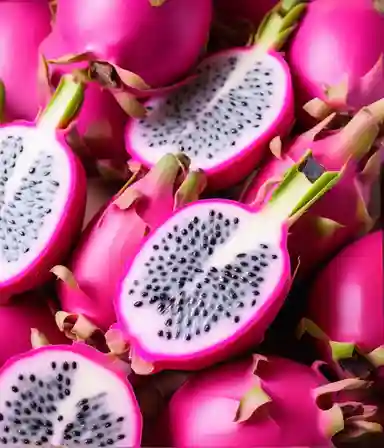
With brilliant fuchsia skin and white pulp, red pitaya is an exotic tropical fruit. It offers a kiwi-strawberry taste and texture. Pitaya is rich in antioxidants, phytonutrients, and vitamins that benefit immunity, heart health, digestion, and more.
20. Red Peppers
Adding vibrant color and a touch of heat, red bell peppers are sweeter than other pepper varieties. Red peppers offer nearly 3 times more vitamin C than orange ones. Their capsanthin and capsaicinoid phytonutrient content provide anti-inflammatory benefits.
21. Kumquats
Kumquats are bite-sized citrus fruits with sweet, edible skin and sour pulp. They contain fiber, vitamins, minerals, and antioxidants like carotenoids to reduce inflammation. The vibrant skin of kumquats contains most of the nutrients.
22. Red Dates
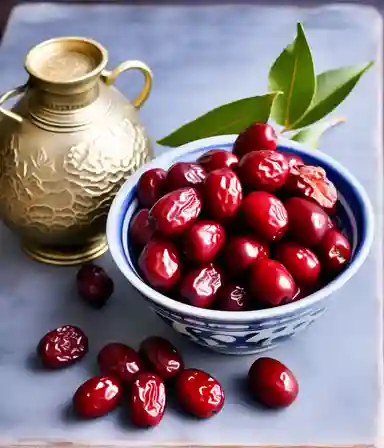
Used in traditional medicine, red dates are dried fruits that resemble plump raisins. They have a chewy texture and a sweet flavor. Red dates are loaded with antioxidants, fiber, and minerals like iron that increase energy and improve digestion.
23. Passion Fruit
Grown in tropical regions, passion fruit has a hard, smooth, red-purple rind enclosing juicy seed sacs. The flavor is exotic, sweet, and tangy. Passion fruit provides antioxidants and phytonutrients that support heart health and regulate blood pressure.
24. Soursop
With fuzzy green skin and snow-white flesh, soursop is a tropical fruit. It has a unique flavor that is tart, tangy, and slightly sweet. Soursop contains compounds that exhibit anti-cancer, anti-microbial, and sedative properties.
25. Red Rambutan

Like rambutan, the red rambutan has a red, hairy shell protecting the soft, sweetly acidic flesh. It is rich in vitamin C, antioxidants, and minerals. Red rambutan may help strengthen immunity, control diabetes, and improve digestive health.
26. Starfruit
With five ridges running its length, starfruit has a juicy, crunchy texture and tart apple-like flavor. The vibrant red-purple skin offers quercetin, gallic acid, and other antioxidants that protect cells from damage.
27. Lychees
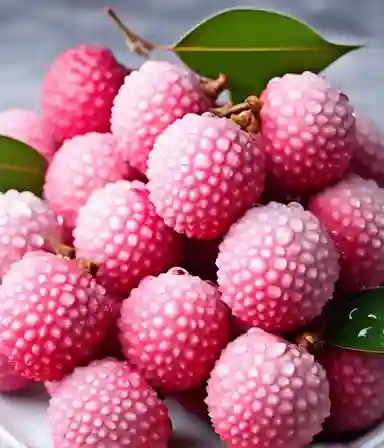
Called the Queen of Fruits, lychees have a bumpy red shell and translucent white flesh with a floral aroma. Lychees contain antioxidants like vitamin C and polyphenols to support immunity, heart health, digestion, and more.
28. Radicchio
Despite its red-purple, cabbage-like appearance, radicchio is not a vegetable but a nutrient-dense leafy fruit. It has a pleasant, bitter taste. Radicchio contains inulin fiber, which acts as a prebiotic to promote gut health.
29. Beetroot
Though commonly thought of as a vegetable, beetroot is a sweet, earthy root fruit. Its pigments may help lower blood pressure, boost stamina, and fight inflammation. Beetroot’s red color comes from betalains, antioxidants with detoxifying effects.
30. Rhubarb
With red stalks and tart flesh, rhubarb is a unique spring fruit often mistaken for a vegetable. It provides calcium, vitamin K, and anthocyanins. Rhubarb has antibacterial properties and may help regulate blood sugar.
31. Tomatoes
Technically a fruit, tomatoes are packed with the antioxidant lycopene, which gives them their red hue. Lycopene promotes heart health and may lower the risk of prostate cancer. Tomatoes are rich in vitamins A and C, too.
32. Red Cabbage
With deep reddish-purple leaves, red cabbage has the highest antioxidant levels of all cabbage varieties. It contains anthocyanins and polyphenols that prevent cell damage by free radicals. Red cabbage also helps lower inflammation.
33. Chokecherry
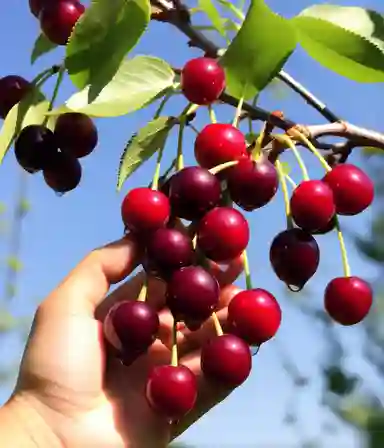
With their bright red skin and astringent flavor, chokecherries make tart jams, syrups and baked goods. These tiny stone fruits contain disease-fighting antioxidants like vitamin C, beta carotene, and protective anthocyanins. Chokecherry shrubs thrive in colder climates.
34. Red Orange

A sweet treat with a ruby red interior, red oranges are a colorful mutation of regular oranges. Their pigments provide health-boosting carotenoids and lycopene. Red oranges also contain immunity-charging vitamin C and may help lower blood pressure.
35. Red Cactus Fruit
A robust desert plant, the red prickly pear cactus bears vibrant reddish-purple fruits with refreshing, eetly tart juice inside. With their high water content, red cactus pears are perfect for hydration and surprisingly low in calories. They also deliver antioxidant power.
36. Red Elderberry

Don’t be fooled by their small size – red elderberries pack huge nutrition. These deep red berries have natural compounds called anthocyanins that may fend off illness and inflammation. Elderberry’s tangy flavor is perfect for teas, syrups, and desserts.
37. Red Feijoa
Hailing from South America, the oval-shaped red feijoa has creamy white flesh with a unique sweet-tart taste. Red feijoas contain antioxidant plant compounds called flavonoids which offer anti-inflammatory and antimicrobial effects to boost immunity.
38. Red Fig
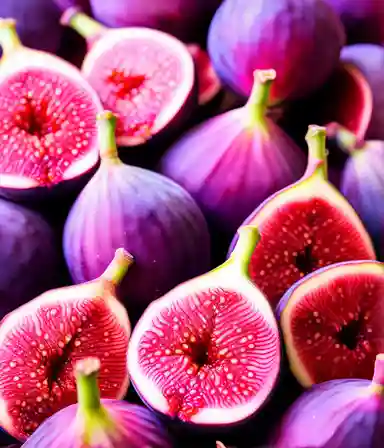
Hidden within velvety purple skin, sweet red figs have deep crimson flesh that provides a delicious boost of fiber, potassium, and calcium. Red figs’ stellar antioxidant content helps guard against chronic diseases. These beauties thrive in tropical climates.
39. Red Kiwi
Furry brown outside and dramatic red inside, vitamin C-packed red kiwi delivers more nutrients than its green counterpart. Its unique berry-like flavor comes from antioxidant pigments. Red kiwis make colorful, nutrient-dense additions to any meal.
40. Red Snapper
With its characteristic red-orange hue, the red snapper is a lean, flaky white fish. It provides high-quality protein, selenium, vitamin A, omega-3s, and potassium. Red snapper has a mild, slightly sweet flavor.
41. Red Lentils
Tiny red lentils cook faster than other lentil varieties, softening into a creamy, nutty puree. They are rich in protein, fiber, folate, and iron. Red lentils may help reduce inflammation, improve digestion, and stabilize blood sugar levels.
42. Giant Red Pomello
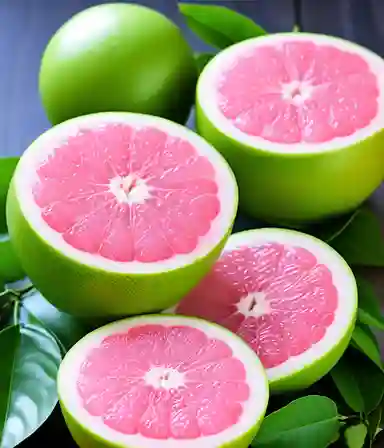
Pomelos are one of the largest citrus fruits around. These monster grapefruits have juicy red pulp that tastes sweet and slightly sour. The edible white pith of giant red pomelos provides cholesterol-lowering benefits.
43. Ruby Red Shiso Leaves
With ruffled emerald leaves blushed in red hues, ornamental red shiso provides a bold, citrusy flavor to Asian dishes. Beyond flavor, red shiso contains carotenoid antioxidants for fighting illness along with compounds that reduce inflammation and bacteria for better health.
44. Red Fuscia Bananas
With deep purplish-red skin, red Fuscia bananas have a slight raspberry taste. They are packed with antioxidants like dopamine and catechins that reduce damage from stress and free radicals. Red bananas help moderate blood pressure too.
45. Red Currant Tomatoes
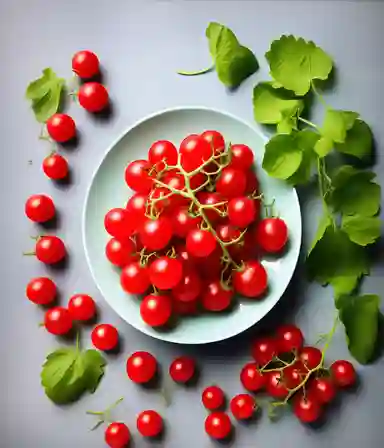
No bigger than grapes, red currant tomatoes burst with a sweet, complex flavor. Their high lycopene content benefits heart health. Red currant tomatoes also contain vitamin C, potassium, and antioxidants in a petite package.
46. Red Chorizo Peppers
Ranging from purple to bright red, chorizo peppers have a spicy paprika flavor. They provide capsaicin, which may reduce the risk of cancer and help with arthritis pain. Chorizo peppers add vibrant color and a kick of heat.
47. Red Rome Apples
An heirloom variety, red Rome apples have dense, crisp flesh and a sweet-tart flavor. Their reddish skin contains antioxidant anthocyanins. Red Rome apples are packed with immune-boosting vitamin C.
48. Red Orach
A leafy green vegetable with red veins and stems, red orach contains iron, calcium, vitamin C, and beta-carotene. It has a mild, nutty spinach-like taste. Red orchard’s antioxidants may protect against heart disease.
49. Red Mustard Greens
With frilly green leaves and red-purple veins, red mustard greens have a spicy, peppery bite. They offer anti-inflammatory benefits thanks to sulforaphane, vitamin K, and antioxidants. Red mustard promotes heart and eye health.
50. Red Leaf Lettuce
Deep red ruffled leaves make red leaf lettuce visually stunning. It has a delicate, sweet flavor with notes of nuts and vanilla. Red lettuce contains vitamin A, potassium, and protective antioxidants.
Benefits of Eating Red Fruits
1. The Perks of Choosing Red Fruits
Colorful produce plays an important role in a healthy diet. When it comes to fruits, don’t overlook the ruby red varieties. Red fruits are chock full of key nutrients and antioxidants that support the body in numerous ways.
2. Boost Your Immunity
Many red fruits are packed with immune-strengthening vitamin C. Just one medium strawberry provides over 100% of your daily vitamin C needs. Other great sources include red peppers, guava, and red currants. Vitamin C acts as an antioxidant to fight illness-causing free radicals.
3. Improve Heart Health
The vibrant pigments in red fruits contain flavonoids, lycopene, and anthocyanins – compounds that reduce inflammation and the risk of heart disease. Pomegranates, cranberries, red grapes, and tomatoes are brimming with heart-healthy antioxidants.
4. Regulate Blood Sugar
Studies show that consuming red fruits may help keep blood sugar stable thanks to their fiber and polyphenol content. Plums, red apples, and raspberries all help modulate the insulin response. This effect aids diabetes management.
5. Protect Your Cells
The antioxidants abundant in red fruits neutralize free radicals that cause oxidative damage to cells. Blueberries and red grapes contain resveratrol, which may shield cells from harm. Eating red fruits helps fight aging at the cellular level.
6. Defend Against Cancer
Red fruits like strawberries, cherries, watermelon, and red guava are rich in lycopene and ellagic acid – compounds that exhibit anti-cancer activity. The anthocyanins in red raspberries may also slow the growth of cancerous tumors.
7. Vision Health
Specific carotenoids that give red fruits their vivid color also promote eye health. Lycopene, lutein, and zeaxanthin found in watermelon, red peppers, red peaches, and other red fruits help defend the eyes against UV damage and macular degeneration.
The variety of red produce is astonishing – now we know they are more than just beautiful, but nutritious as well. Let red fruits bring their immune-boosting, disease-fighting power to your plate!
How to Incorporate Red Fruits into Your Meals
1. Adding More Red to Your Plate
Red fruits get their vivid color from powerful antioxidants. These compounds fight inflammation, protect cells, and reduce disease risk. It’s important to eat red fruits daily, but you may need ideas on how to work more into your diet.
2. Breakfast Boost
Start your day off right with red fruits. Toss raspberries, sliced strawberries, or pomegranate arils into your morning oatmeal. Use diced red apples or pears when baking overnight oats. Blend cherries or red grapes into smoothies. Top waffles or pancakes with a red fruit compote.
3. Salad Standouts
Red fruits add sweetness and color contrast to salads. Sprinkle cranberries or pomegranate seeds over the greens. Mix in diced red apples or pears for crunch. Toss on a handful of raspberries or cut-up strawberries for a burst of juicy sweetness.
3. Snack Attacks
When you’re craving something sweet and healthy, reach for red fruits. Pack fresh red cherries, plums, or grapes in your child’s lunchbox. Enjoy homemade fruit leathers or fruit bars made with red berries. Blend up a sorbet from pureed raspberries, red currants, or pitaya.
4. Dazzling Desserts
Satisfy your sweet tooth with red fruit desserts. Bake red apples and top with cinnamon. Grill pineapple slices brushed with honey. Make banana “nice cream” and mix in strawberries. Swirl red currant or cherry jam into Greek yogurt. Simmer sliced stone fruits with a touch of honey.
5. Main Dish Magic
Incorporate red produce into entrees too. Serve grilled salmon with a red onion compote. Mix red grapes into chicken or tuna salad. Add diced tomatoes or red bell peppers to pasta dishes and pizzas. Roast beets alongside potatoes or carrots.
With so many nutritious and delicious options, there are endless ways to pump up your red fruit intake! Get creative with these vibrant additions at any meal.
Red Fruits and Seasonal Eating
Pick Produce at Its Peak
Eating fruits and veggies during their natural season provides the most nutrients and flavor. Here’s when you can enjoy delicious, ripe red fruits grown locally.
1. Spring
As winter thaws, enjoy sweet red berries – raspberries and strawberries ripen in late spring providing a burst of vitamin C and antioxidants. You’ll also find beautiful crimson red currants and cherries coming into season.
2. Summer
The sunny days of summer yield many juicy red favorites. Look for plump watermelon, refreshing red grapes, tangy red plums, and peaches perfect for cobblers. Tomatoes and peppers also flourish during summer.
3. Fall
Autumn delivers bountiful red apples – great for baking into pies or enjoying as on-the-go snacks. Continue munching on juicy Concord grapes and pears. You’ll also find peak-season pomegranates and persimmons available.
4. Winter
In colder months, focus on the bright citrus fruits of winter. Blood oranges, ruby red grapefruit, and colorful tangerines are all at their best. And don’t forget about festive cranberries – perfect for the holidays.
With So Much Variety
No matter the season, there are always nutritious red fruits ripe for the picking. Follow the seasons to find the best produce. Discover new red fruit favorites and take advantage of their peak nutrition.
Final Thoughts
When filling your plate, don’t just think green. Add a pop of red instead! Red fruits and vegetables are powerhouses of nutrition. Their bright pink to scarlet hues come from phytonutrients that promote health in so many ways.
The pigments in red produce act as antioxidants to fight inflammation and free radical damage. Compounds like lycopene, anthocyanins, and ellagic acid may help reduce the risk of chronic illnesses like heart disease and cancer. Some studies show red fruits can even give your memory a boost!
Beyond benefits, ruby red fruits also supply unique flavors. Juicy cherries, sweet raspberries, tangy cranberries, and crisp red apples all provide taste adventures. It’s easy to liven up any meal by going for the red. So embrace the entire and let vibrant red produce make your healthy diet shine.
FAQs
What fruits are red?
There are many vibrantly red-colored fruits including cherries, strawberries, raspberries, pomegranates, apples, plums, watermelon, cranberries, red grapes, and red pears. Other reddish-hued fruits are guavas, passion fruit, lychees, and red bananas.
What is the most popular red fruit?
Strawberries are the most popular red fruit. Juicy and sweet with a unique shape, strawberries are delicious and versatile – perfect for snacking, salads, baking, jams, and more. They provide an excellent source of vitamin C and manganese.
What are 10 red foods?
Some nutritious red foods include strawberries, raspberries, cherries, tomatoes, red peppers, radishes, red cabbage, red apples, red grapes, and red potatoes.
Which fruit has red juice?
Pomegranates have vivid red juice inside their tough outer skin. When pomegranate seeds are crushed, they release a bright crimson-colored and flavorful juice. Pomegranate juice contains beneficial plant compounds called polyphenols.
Is Guava a red fruit?
Yes, some varieties of guava have red skin when ripe including red Malaysian guavas, Thai marble guavas, and red apple guavas. Their juicy flesh also ranges from white to dark pink. Red guavas are rich in the antioxidant lycopene.
Please Write Your Comments